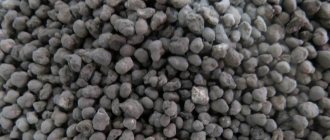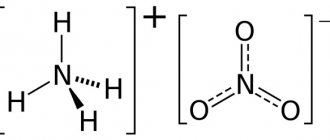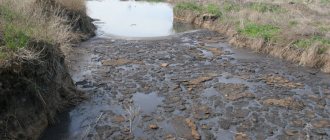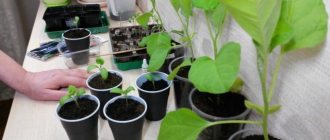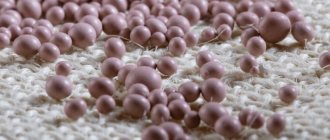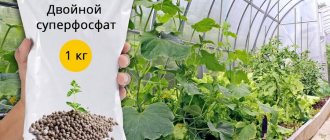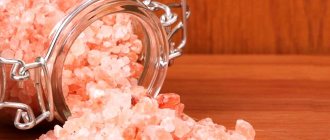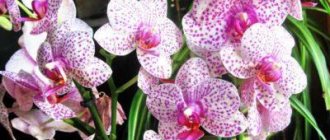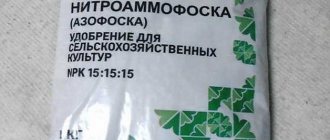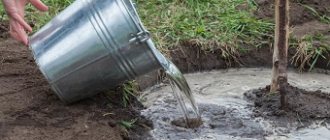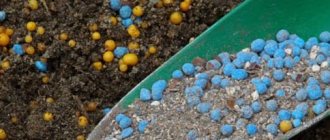Composition and purpose of ammophoska
The basic formula of the composition includes 4 chemical elements: phosphorus (15%), sulfur (14%), nitrogen (12%) and potassium (15%). Calcium and magnesium are present in small amounts (0.5% each).
- Phosphorus – provides plants with the energy necessary for proper growth and development, stimulates abundant flowering and fruiting, and increases endurance. The fertilizer in question contains ammonium phosphate and potassium phosphate.
- Sulfur – converts nitrogen into an easily accessible and quickly digestible form that is completely absorbed by plants.
- Nitrogen (ammonium sulfate) – promotes the growth of green mass, the synthesis of elements and an increase in yield.
- Potassium (presented in the form of sulfate) – increases sugar content and oil content, improves taste and increases the shelf life of fruits, regulates water balance, supports the immune system of plants, and increases the number of ovaries.
What is the difference between ammophoska and nitroammophoska
Also check out these articles
- Winter varieties of pears
- Products useful for expectant and young mothers
- Technology for growing indoor plants
- Nolina (Beaucarnea)
What is the difference between ammophoska and nitroammophoska
Very often, beginning gardeners and gardeners confuse ammophos with nitroammophos. But these are different substances. Ammofoska is a concentrated, complex mineral fertilizer in gray granules. It is universal, can be used on any type of soil and for a wide variety of plants. Sometimes it is added dry, sometimes dissolved. The fertilizer has many advantages: it is hygroscopic, does not emit toxins, does not cake during long-term storage, and is very convenient to use.
In turn, Nitroammophos is a complex universal fertilizer. It contains many components contained in different concentrations. So the first difference is the composition. Sold in the form of pink granules. This fertilizer is applied as the main fertilizer when sowing various crops. Suitable for different types of soil, but works best on black soil. It is very often used in the fall, while ammophos is used very rarely in the fall. It is rarely diluted and is mostly used in dry form.
How to use ammophoska on different types of soil?
Granular fertilizer is evenly scattered over the surface of the soil before digging. In the form of a solution, it is used as root and foliar feeding for all types of plants.
Chernozems of the forest-steppe and meadow zones
Although these types of soil contain a sufficient amount of nutrients, additional fertilizing will not hurt them.
Carbonate chernozems
Instead of ammophos, it is permissible to use ammophos as a fertilizer for this soil, since potassium does not need to be added to it.
Gray soils and chestnut soils
When growing industrial crops (sunflower, rapeseed, flax, etc.) on these soils, the application of ammophosphate must be accompanied by watering.
Saline soils
The meager content of nutrients makes fertilizing the soil with ammophos a mandatory condition for farming.
Protected soils
Due to the rapid depletion of soil when growing various crops, the addition of these nutrient granules is also necessary to obtain a good harvest.
Description of ammophos
The fertilizer composition was developed to provide plants with a sufficient amount of phosphates in case of underconsumption or poor absorption from other fertilizers. The lack of easily digestible phosphorus is especially noticeable at the initial stage of development, during the period of intensive growth of the root system. Lack of phosphorus negatively affects the formation of reproductive organs.
The development of the entire plant is inhibited, the ripening of fruits is suspended, and as a result, the yield decreases. In addition, the lack or poor absorption of phosphorus slows down the positive effect of other, primarily nitrogen, fertilizers on plants. Therefore, for most crops, the required dose of phosphorus is first applied.
Attention! Ammophos is the best fertilizer for use in greenhouses and greenhouses.
When to use ammophoska?
Determining whether it is time to start excavation work is quite simple: you need to pick up some earth, form a small lump and, holding it at a height of about a meter, throw it down without accelerating. If a cake forms when you hit the surface, the soil is still too wet. If the lump has crumbled, you can begin work. But you can add ammophoska without waiting for this time. It is often scattered on the soil in March, right on top of the snow. The moisture generated from its melting dissolves the granules, and nutrients fall into the ground.
Security measures
It is necessary to adhere to certain safety rules when working with fertilizer (the drug belongs to the fourth hazard class). When using Ammofoska, you must:
- protect all parts of the body with clothing made of natural dense material;
- use protective equipment for the respiratory system (respirator, gauze bandage);
- Use special glasses and put on rubber gloves on your hands.
Although the dust emitted by the granules is not toxic, it is better to try to avoid its formation. To do this, the fertilizer balls are slightly moistened with water from a spray bottle. If the drug gets on the skin and mucous membranes, they should be thoroughly rinsed with cold water. If the substance is accidentally swallowed, drink activated charcoal or induce vomiting and consult a doctor immediately.
Instructions for preparation and use
Each crop has its own timing and norms for applying the fertilizer in question.
For flowers and lawn
Apply spring application. Fertilizer is embedded directly into the soil before planting to a depth of 3-5 cm.
Another way: having distributed the granules over the surface, sprinkle a small layer of earth, sawdust or sand on top. This is done to prevent nitrogen from evaporating from the fertilizer.
It is better to replenish the lawn by spraying with an aqueous solution of the drug. By feeding, the grass becomes juicier and thicker, and ornamental plants delight with the brightness of their colors and the duration of their flowering.
For potatoes
Ammophoska for potatoes is added in the amount of 1 tablespoon locally directly into the holes when planting tubers. The multicomponent composition of the fertilizer contributes to the proper development of the plant and the formation of an excellent harvest.
Adding ammophos as a top dressing increases the starchiness of potatoes, the number and size of tubers.
For peppers
Granules of the drug are added during digging (30 g / 1 m2) or when replacing soil. Adult plants are fed with a fertilizer solution (10 g per bucket of water).
For tomatoes
The drug is applied throughout the growing season. When planting seedlings, add ammophoska for tomatoes to the holes in dry form; during the flowering of tomatoes and ripening of fruits, water with the solution once every 14 days.
For pear
Spring application of the drug stimulates flowering and the appearance of ovaries. Further feeding will improve the taste and fruit filling. Due to the deep root system of trees, fertilizer is applied in liquid form.
For cucumbers
To improve soil fertility in the garden, when digging you need to add 20-30 g of granules per square meter of area, and then during the summer feed the plants with an ammophosphate solution every 10 days.
For onions and garlic
When planting, apply 20 g of dry fertilizer per 1 m2. During the growing season, spraying greenery will be of great benefit.
Application
The use of ammophoska is indicated for all crops without exception due to its versatility. However, exceeding the dosage to accelerate the effect of the drug is unacceptable: this will cause acidification of the soil.
Dosage
How much ammophoska should be added to the soil? This depends on the type of crop: each seedling has its own application rate and time. The mechanical characteristics of the soil are also taken into account.
Approximate dosage rates:
- root crops, vegetables - up to 30 g per m2;
- lawn grass, berries, flowers - up to 30 g per m2;
- legumes, grain crops - up to 20 g per m2;
- young fruit trees - up to 50 g per m2;
- mature fruit trees - up to 100 g per m2.
How to properly apply ammophoska to the soil? Dry granules need to be buried in the ground to prevent nitrogen evaporation. If you need to spray the seedlings, make a solution in warm water. Then the mixture is filtered and the green mass is treated with a sprayer.
Note! Granules are also used to form a compost heap.
When is the best time to use ammophoska? The drug is resistant to any temperature, so it can be used immediately after the snow melts - in early spring. Before warming, the granules will have time to release useful substances to the earth, and the plants will receive everything they need after planting.
We advise you to read: Diammofosk has a positive effect on the composition of the soil.
Is it necessary to use ammophoska in the summer? This depends on the quality of the soil and weather conditions. If necessary, the drug is applied several times during the growing season. Dry fertilizer is incorporated into the soil. Irrigation and watering are carried out after rain or heavy watering. It is important to choose the right time - either in the evening or in cloudy weather. This is necessary to prevent rapid evaporation of fertilizer from the leaves.
Autumn feeding is not carried out. This provokes increased growth of weeds, and the plants do not have time to prepare for winter due to the abundant formation of green mass.
Ammofoska cannot be used in the fall, as the fertilizer causes rapid development of plants.
The universal fertilizer ammophoska is used to reanimate damaged plants, as well as to enrich depleted soil.
Compatibility with other drugs
Seedlings systematically need different types of feeding. Gardeners often mix several types of preparations. However, it is necessary to take into account the compatibility of the ingredients with each other so as not to harm the seedlings.
Ammofoska is not compatible with alkaline preparations:
- calcium nitrate;
- sodium nitrate;
- wood ash.
If you combine ammophoska with these fertilizers, nitrogen will quickly volatilize. At the same time, phosphorus compounds acquire a form that is difficult for plants to assimilate.
Storage conditions and periods
The closed package can be stored for no more than 9 months in a dry, dark place at a temperature of 0 to +30 °C. Be sure to limit access to the drug to children and animals.
Having a balanced nutritional composition, ammophoska has found application not only in many summer cottages, but is also widely used for agricultural needs. It helps to almost double the yield. When ammophoska is applied to cereal crops, the quality of flour made from them improves by increasing the gluten content. Fruits and berries acquire a more pronounced taste, tolerate transportation better and are stored longer.
Advantages and disadvantages
Ammophoska and other complex fertilizers began to be produced in the USSR in the 60-70s of the last century. In practice, their pros and cons have been identified. The main advantages of this mineral fertilizer are the following:
- Convenience. Simultaneous application of nitrogen, phosphorus and potassium to the soil. Some manufacturers add sulfur, calcium and magnesium to Ammofoska. It is more convenient to work with mineral fertilizers, transport them and store them. They are more compact than organic ones.
- Solubility in water. It dissolves well in water; if it is added during digging, it dissolves in the soil.
- Versatility. Equally suitable for fruit, berry, vegetable and ornamental crops. The only difference is in the application rates.
- Balance. Ammofoska is known to have the ability to reduce the nitrate content in fruits and berries.
- All-season. Can be applied almost all year round. The uniqueness of this fertilizer is that it does not break down at subzero temperatures; it can be scattered even on frozen ground and it will still “work.” It is not worth applying it in advance, in winter on snow, as the nitrogen will evaporate over time.
- Ammophoska is equally effective both in open and closed ground. Not all complexes have this quality.
- Lack of chlorine and sodium, which harm the soil.
The disadvantages include the danger of fertilizer as a chemical substance. When used in large doses, it can affect people, animals and the environment.
Although Ammofoska belongs to hazard class 4, the substances of which are characterized as low-hazard, the destruction of the ecological balance still occurs.
After applying this fertilizer, complete restoration of the soil occurs after 3 years. Including pH balance. With regular use of Ammofoska, the soil becomes slightly acidic.
Methods of application to the soil
When applying fertilizer to the soil, it is necessary to choose methods that will preserve all the nutrients contained in the ammophoska fertilizer.
Methods for applying fertilizer to the soil:
It is recommended to rake out the soil a little under the plant and sprinkle the product. If you do this differently, for example, by simply scattering ammophoska over the flowerbed, the nitrogen will evaporate and there will be much less benefit.
- Sprinkling the scattered fertilizer with sawdust is considered effective; it will prevent nitrogen from evaporating, retain moisture in the soil, and all useful microelements will be well absorbed by plants.
- After the bushes bloom and fruits begin to grow, it is recommended to water the crops with dissolved fertilizer. To do this, take a bucket of water and add 3 tablespoons of fertilizer to it. The water should only be warm, since nitrogen evaporates in a hot liquid, and the fertilizer dissolves poorly and takes a long time. Each plant requires pouring 1 liter of solution.
- Before feeding, it is advisable to wait until the product granules are completely dissolved.
Varieties
On sale, types of ammophoska are presented under the brand “A” (granular form) and under the brand “B” (in powder form). Moreover, the composition of the complex in both brands is approximately the same: phosphorus is contained in the range of 44-52%, nitrogen 10-12%.
The division by brand is present due to the different method of application:
- Granular fertilizer (grade “A” ) is recommended to be used as a starting (local) option before planting crops. It is also called ordinary.
- Powder fertilizer (grade “B”) should be considered as the main feeding for continuous planting of plants. Powder fertilizer can be used for fodder areas, fields with perennial grasses, green lawns of park and sports types.
Reviews
According to gardeners, in comparison with organic fertilizers, ammophosphate has a number of advantages:
- affordable price;
- low consumption;
- versatility of use;
- no unpleasant odor;
- balance of nutrients (unlike ammophos, ammophos is a complex fertilizer);
- ease of transportation;
- can be applied without prior preparation;
- Possibility of use on any soil.
Flaws:
- Incompatibility with alkaline fertilizers (calcium and sodium nitrate, ash). When mixed, phosphorus compounds acquire a form that is inaccessible to plants for absorption, and a large loss of nitrogen also occurs.
- Contact with skin or mucous membranes of the eyes and respiratory tract causes irritation and inflammation. Precautions must be taken.
- An excess leads to increased soil acidity.
- Autumn application is not recommended (it provokes weed growth).
- During long-term storage of opened packaging, nitrogen and partially sulfur evaporate.
Features of the effect on plants
When cultivating the land, ammophoska granules gradually dissolve due to rain and watering.
This helps plants receive nutrients for a long time. The components break down into ions, which are well absorbed by plant roots. When you apply the product to plant crops in the spring, their growth begins noticeably. The stems thicken, the leaves and flowers acquire rich colors, and the fruits grow much larger. When processing potatoes: the yield increases, the tubers are much larger in size, and the taste becomes better.
This product is effective when growing tomatoes: the process of formation of ovaries is accelerated, the fruits grow faster. Tomato bushes become stronger, tolerate unfavorable conditions more easily and suffer less illness.
The growth of cabbage also accelerates: the heads become large, the plants come out juicy. Decorative flowers respond to this feeding by growing and blooming.
Mineral fertilizing is suitable for various climatic conditions and types of soil.
Using the product
This product is necessary in those areas where a lot of nitrogen is not needed to ensure normal growth and development of crops, but at the same time there is a need for phosphorus. Thus, in areas with the lowest level of humidity, this fertilizer is used during routine tillage before sowing.
Ammophos is most effective on many types of soil under different climatic conditions. It has a particularly good effect on increasing soil fertility if it is combined with preparations that contain nitrogen. When these chemicals are combined, crop yield can be increased by 50%. The product is needed when it is clear that the applied phosphorus fertilizers are not enough or they are not completely absorbed by the plants.
Ammophos is also quite common on individual farms. But not many people know how to use it correctly. It happens that the product is poured under all crops in a row. This is incorrect because superphosphate is suitable for many plants.
Fertilizer is used not only for the future, counting on a positive effect in the coming time, but also when characteristic features of phosphorus deficiency occur.
Doses of drug application
The instructions for use recommend using the chemical for:
- Potatoes. Fertilizers that contain P in the structure increase the size of the crop and increase the amount of starch in this crop. Add 3 g of product to each well.
- Grapes. When spring comes, the ground under the vine is sprayed with ammophos dissolved in liquid at a dosage of 0.4 kg per bucket. After 14 days, foliar feeding should be done using the composition in the proportions of 120 g to 10 liters of water. The chemical has another significant feature: it prevents toxic substances from accumulating in the resulting products.
- Beetroot. This kind of fertilizer is used for any type of root crops: sugar, table, fodder. It promotes the accumulation of sweetness in vegetables. Fertilizer is applied during planting at the rate of 5 g of substance per meter of land.
Fertilizer production
This kind of chemical has been produced in our country for 30 years. Manufacturing technology has been improved over the past several decades. This distinguishes it from similar imported drugs because it has a predictable effect. This property of ammophos allows it to be used for various plants with some reserve; it is quickly absorbed by crops, and an excess of this product can adversely affect the future harvest.
When purchasing a chemical for use on a personal plot, you need to be more careful in choosing the manufacturer. Good results can be achieved by using fertilizer made in Russia, Kazakhstan, and Uzbekistan. The effective product includes up to 50% easily absorbed phosphates. The cost of the drug is low, which makes it possible to use it in any size; production costs do not increase and the price of collected products does not increase.
